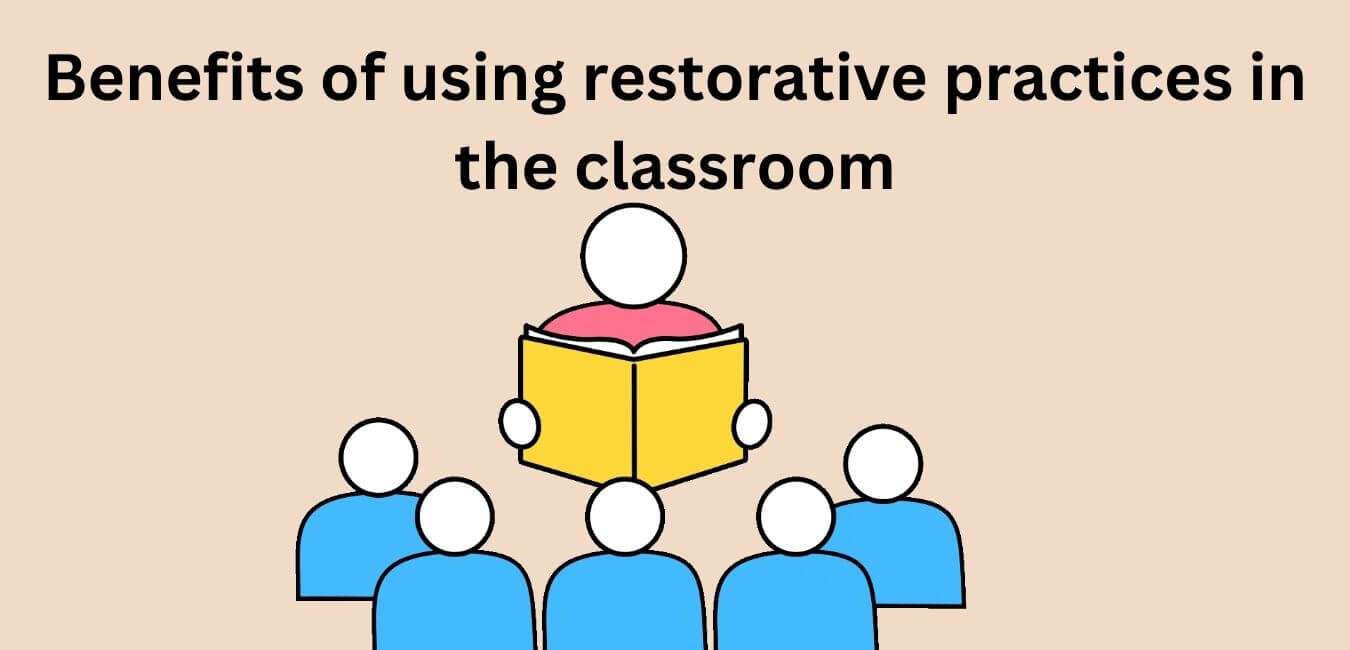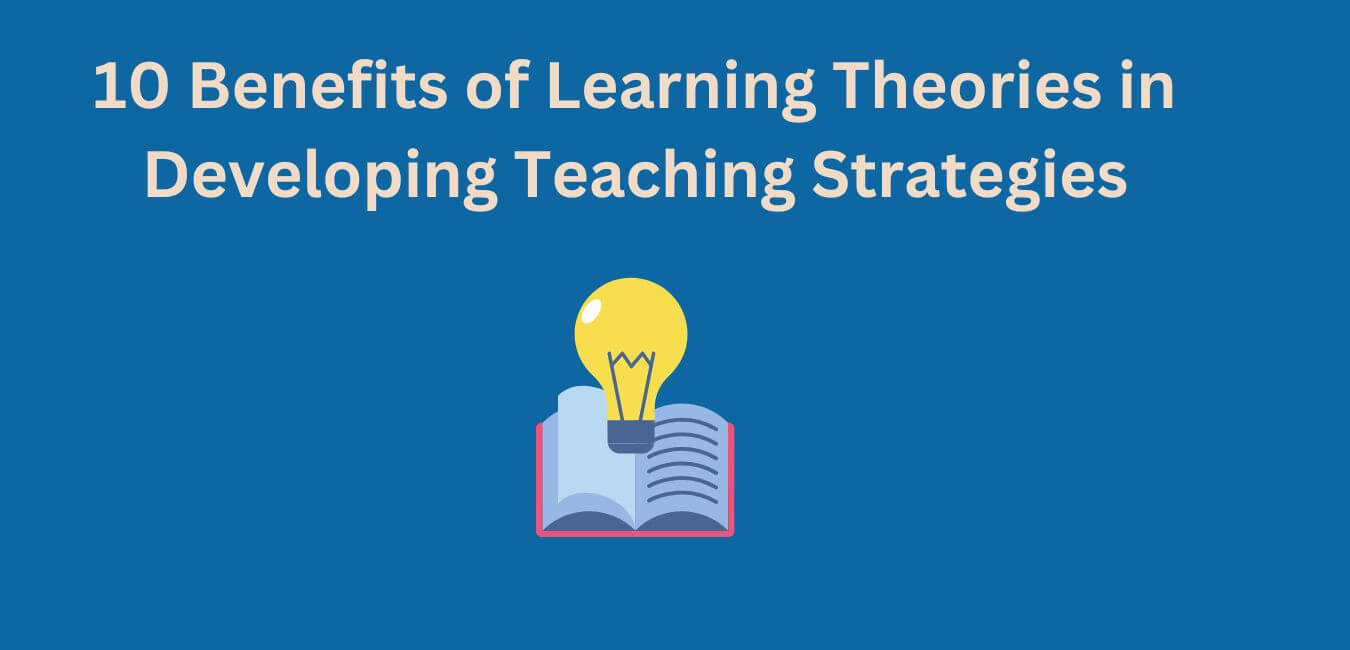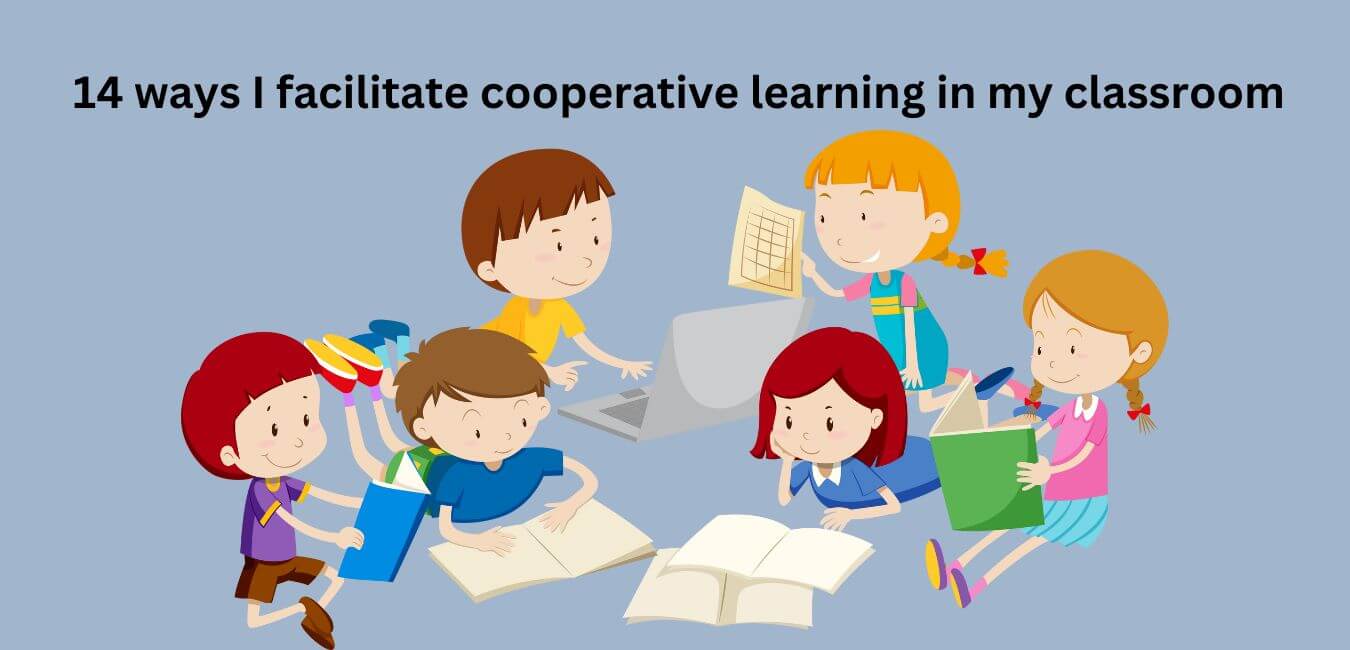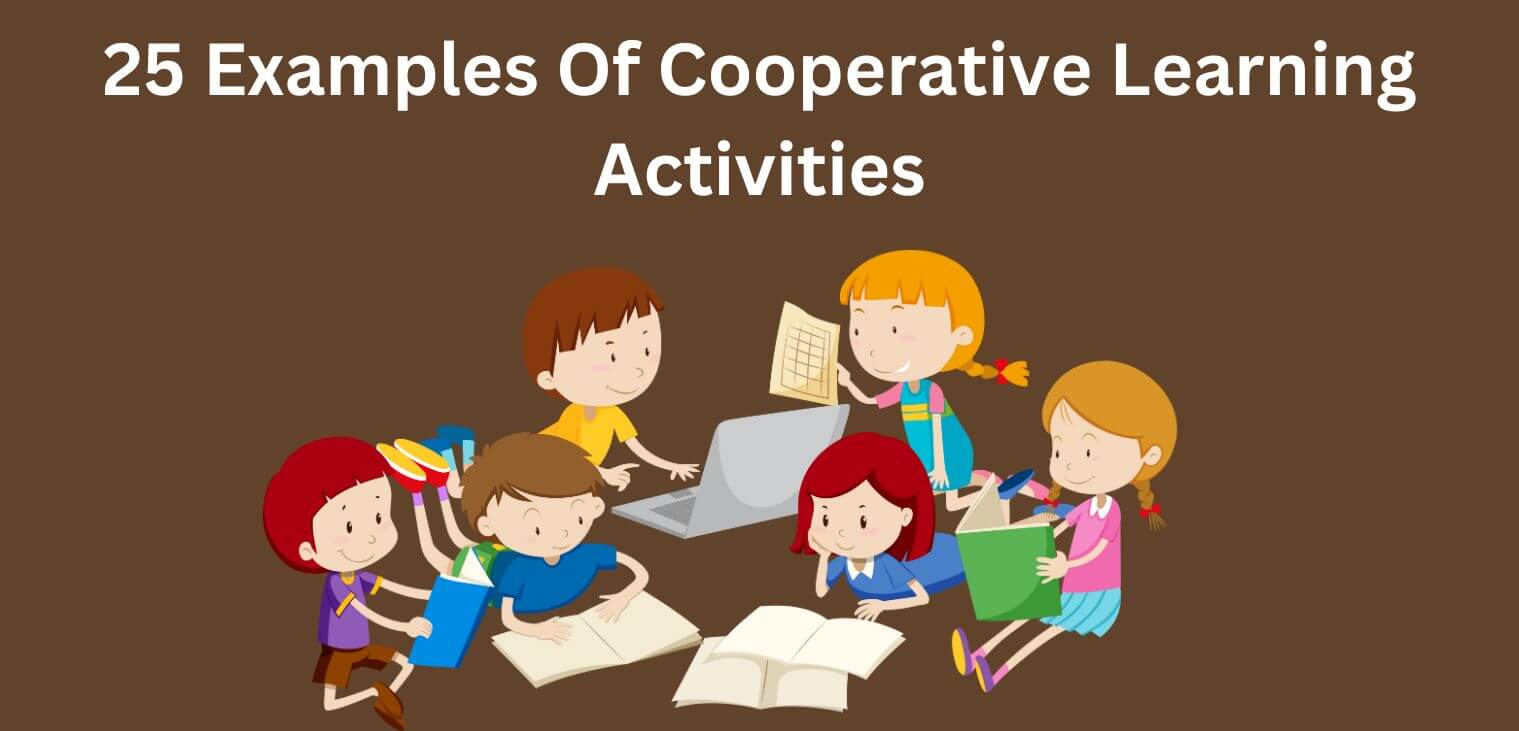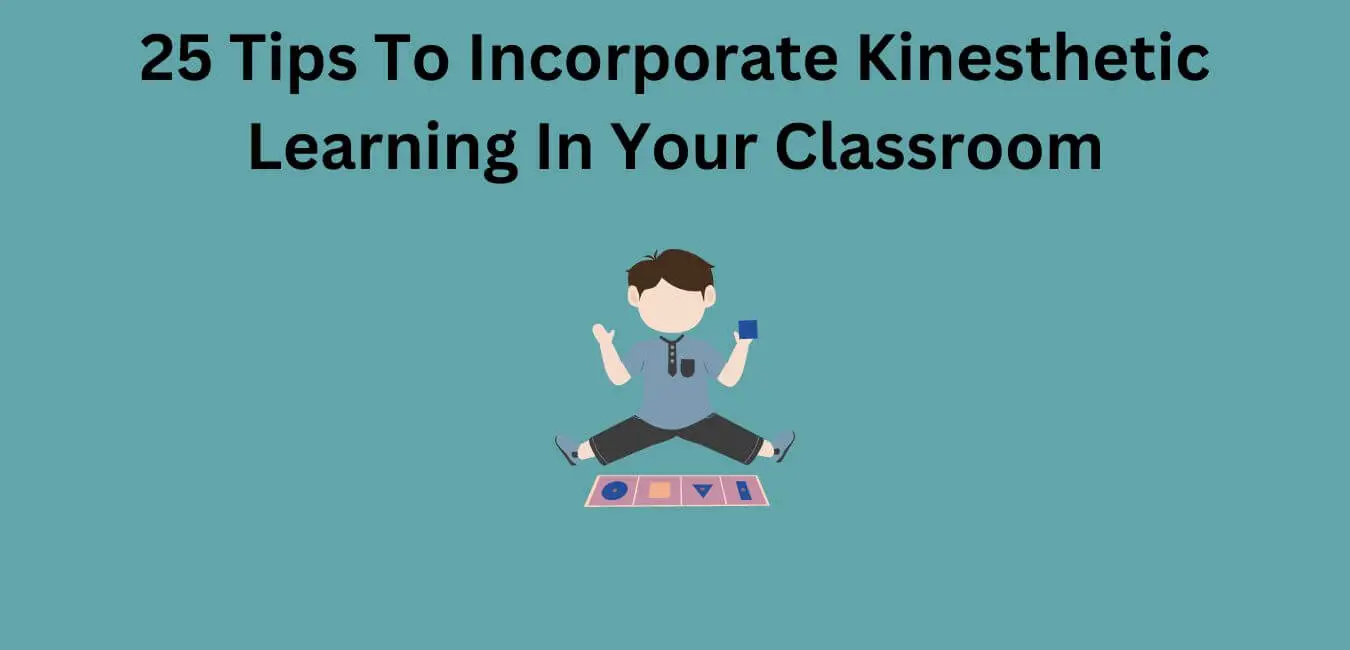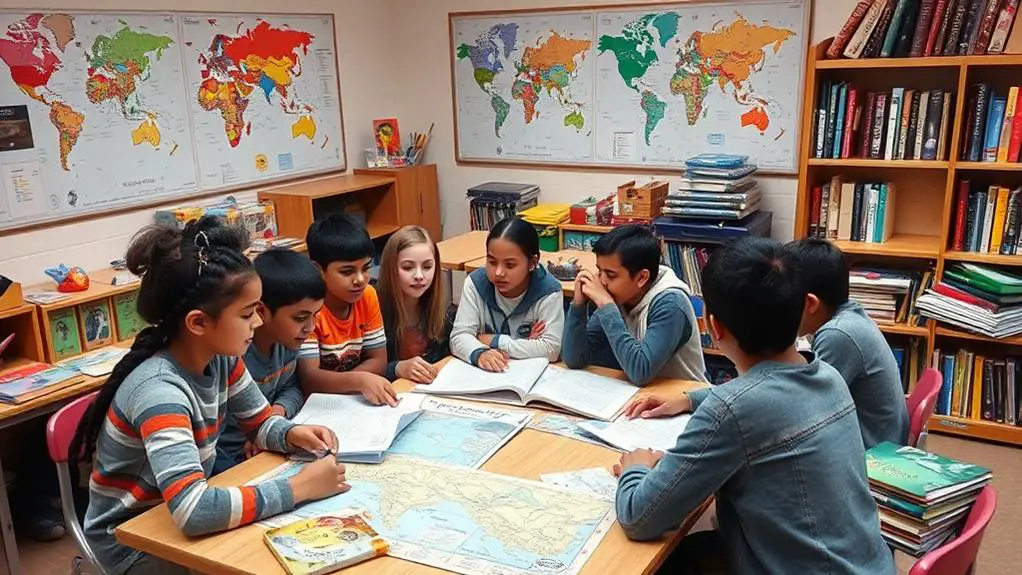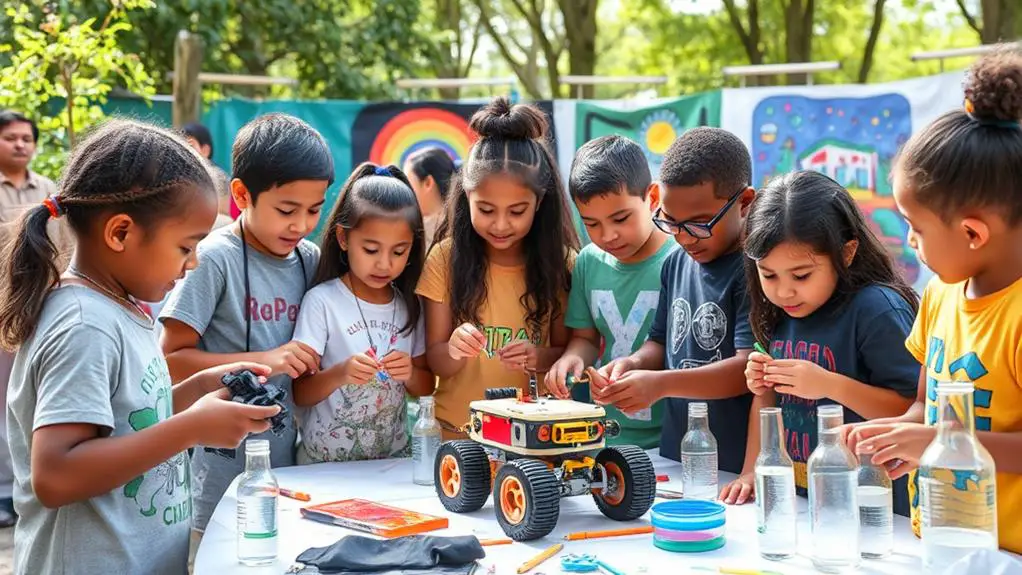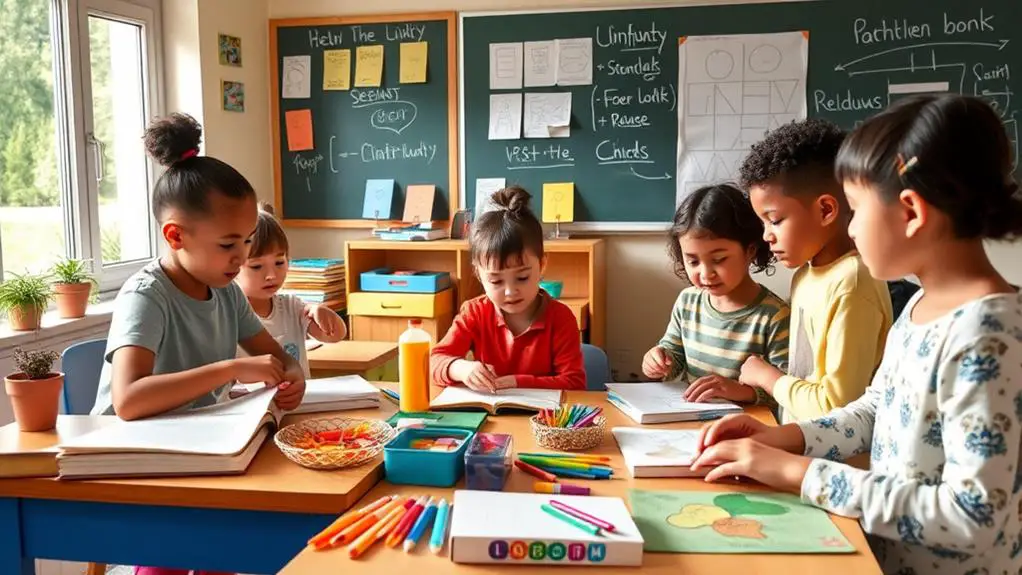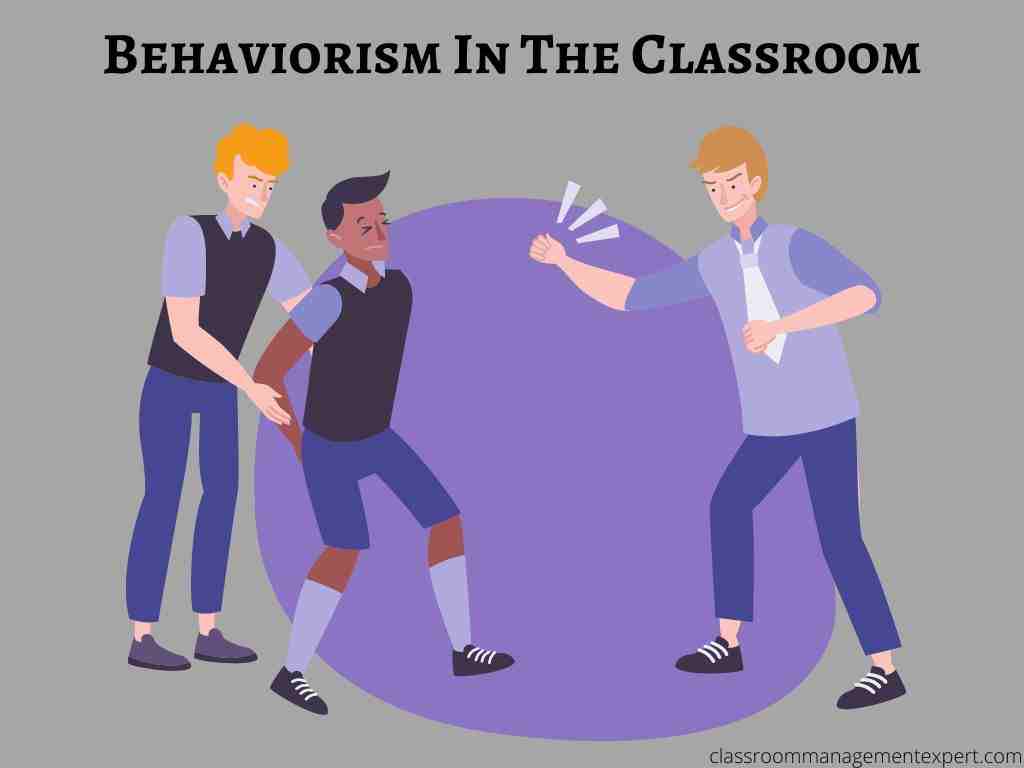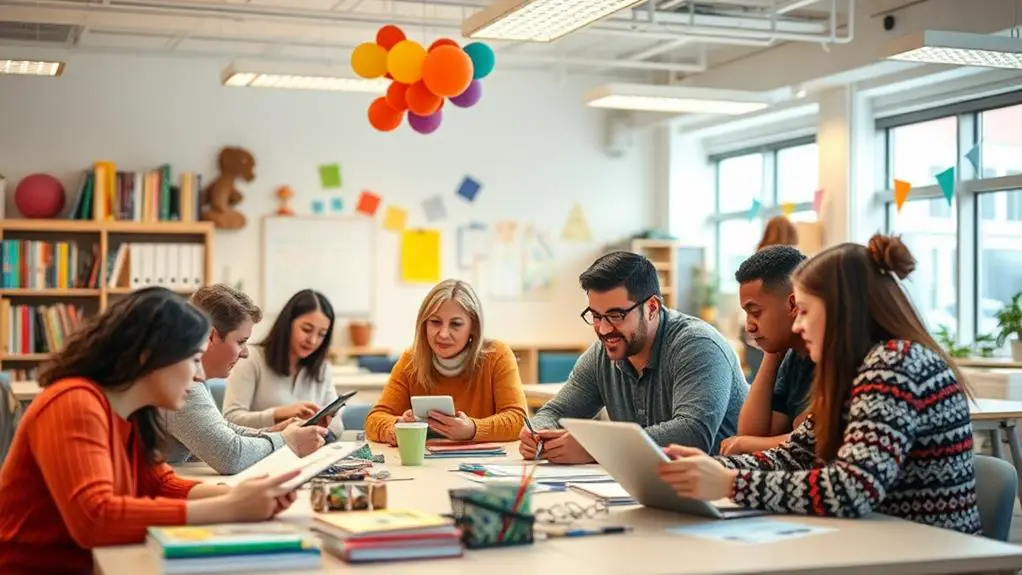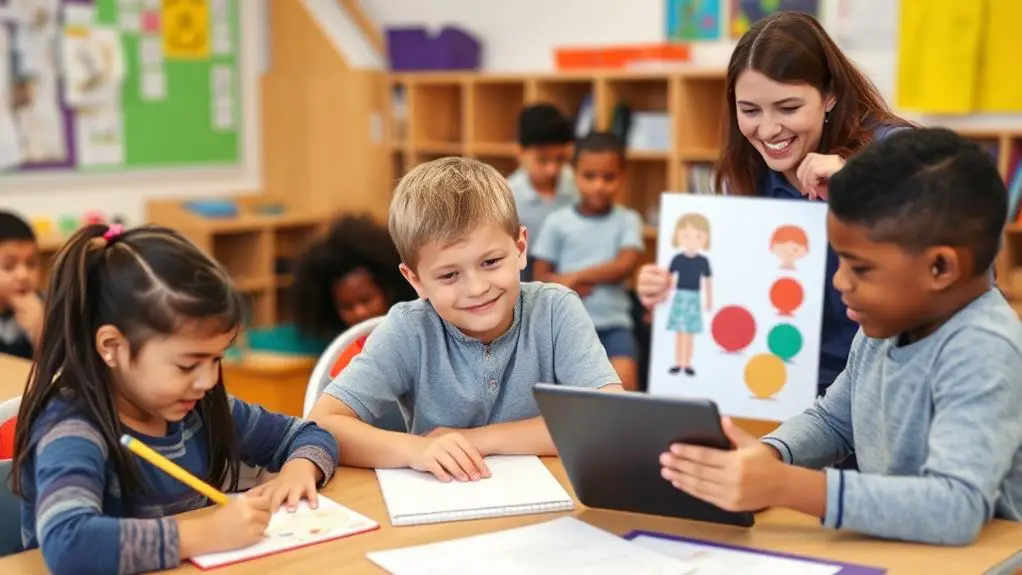Effective classroom management is key to creating a successful learning environment. One of the most effective ways for teachers to improve classroom behavior and student performance is by utilizing restorative practices. Restorative practices encourage communication, accountability, and empathy among students and teachers alike, creating a supportive and respectful learning environment.
In this blog post, we will explore the 19 benefits of using restorative practices in the classroom, from building relationships to reducing disciplinary actions. Whether you’re a teacher looking to improve your classroom management skills or simply interested in innovative approaches to education, read on to discover why restorative practices are worth incorporating into your teaching approach.
Reasons Why Restorative Practices Are Important
Here are 19 benefits you can expect to see when using restorative practices in the classroom:
1. Build accountability among your students.
Restorative practices can be a great tool to build accountability among your students.
Instead of just punishing them for their mistakes, restorative justice focuses on helping them take ownership of their behavior and learn from their actions. It emphasizes accountability and community building in your classroom and encourages students to work together to set expectations for their behavior.
Creating restorative consequences can be simple and effective, especially when you involve your students in the process. By listening to them and trying out something new, you can develop a positive and supportive classroom culture that fosters responsibility and empathy.
With restorative practices, your students will learn why what they did was wrong, build empathy for others that were affected by their actions, and take personal responsibility to repair the harm caused. Teachers who use restorative discipline practices also report better relationships between themselves and their students, as well as improved behavior in the classroom.
So what are you waiting for? Try out restorative practices in your classroom today and see how they can help build accountability among your students!
2. Encourage social-emotional growth and development.
Restorative practices are an amazing process that can help you refine and develop your social-emotional skills in a safe and respectful environment. By intentionally focusing on positive connections and support, you can learn how to resolve disagreements, take ownership of your behavior, and develop empathy and kindness towards others.
Through restorative practices, you will also learn how to repair harm and restore relationships after conflicts, which will help create a positive school climate for everyone. As a student, it’s important to understand how restorative practices can help you remain accountable for your actions, and how they can lead to personal growth and development.
So, let’s dive into restorative practices and explore how they can help you become the best version of yourself.
3. Support positive behavior.
Restorative practices provide students and adults with a respectful and inclusive way to address disagreements and take ownership of their actions. By using these practices, educators can shift their focus from punishing students to creating a positive school culture.
Additionally, when combined with Positive Behavioral Interventions and Supports (PBIS), restorative practices can help meet student behavior goals by teaching and rewarding positive behavior. At their core, restorative practices prioritize relationships, honesty, and accountability, which contribute to creating a safe and supportive learning environment for all students.
So, why not consider incorporating restorative practices into your classroom routine and see for yourself the positive difference it can make on student behavior?
4. Help students develop constructive habits.
Restorative practices in the classroom can help you develop constructive habits. These practices focus on building positive relationships, strengthening trust, and repairing harm done rather than just punishing students for their mistakes.
By using restorative approaches, you can learn how to resolve conflicts, take ownership of your actions, and develop a more compassionate understanding of others. These practices are not only effective at reducing suspensions and expulsions, but they also help you build a restorative mindset, which is crucial for long-term success.
By using specific strategies to prevent problematic behavior and by creating action plans with the support of your crew leader, you can learn how to communicate effectively and take responsibility for your actions. In short, restorative practices can help you develop the habits and skills you need to succeed both in and out of the classroom.
5. Provide a safer learning environment.
Restorative practices can make your classroom a safer and more positive learning environment. By focusing on resolving conflicts, repairing harm, and healing relationships, these practices promote a non-punitive and collaborative approach.
They help build a sense of community and cultivate mutual respect among students and teachers. With restorative practices, you can address conflict in a constructive and proactive way, instead of relying on an exclusionary discipline like suspensions.
Plus, studies have shown that schools that implement these practices see reduced suspensions, improved student engagement and connection to the school, and better relationships overall. Give it a try and see how your classroom can benefit from a restorative approach.
6. Promote positive relationships between students.
Restorative practices in the classroom can promote positive relationships between students.
First and foremost, these practices focus on strengthening relationships and building a healthy school community. By prioritizing student agency and fostering a positive school climate, restorative practices help students own up to their actions and learn to resolve disagreements in a constructive way. This helps to repair harm and restore relationships between students, teachers, and school administrators.
Additionally, restorative practices encourage open discussions and bidirectional communication, which can help to engage students in the school and create a more positive learning environment. By utilizing these strategies, you can help promote positive relationships and build a stronger sense of community in your classroom. Are you ready to give it a try?
7. Build trust and understanding between students and teachers.
Have you ever felt like your relationship with your teacher could be better? Well, restorative practices in the classroom might just be the solution you’re looking for. By focusing on building a strong sense of community and positive relationships between students and teachers, these practices help create classroom environments where trust and understanding can thrive.
Rather than relying on punishment and disciplinary measures, restorative justice principles are used to encourage students to take ownership of their behavior and work through conflicts in a productive and respectful way. Through activities like games and discussions, teachers are given the opportunity to really get to know their students and understand their individual needs, making it easier to create a supportive and inclusive learning environment.
So, if you’re looking for a way to improve your relationship with your teacher and build stronger connections with your classmates, restorative practices might just be the answer.
8. Develop a strong sense of community within the classroom.
Did you ever feel like your classroom isn’t a very supportive or welcoming environment? Well, restorative practices could be the answer you’re looking for. These practices focus on building relationships between students and teachers and fostering a sense of community within the classroom.
By using restorative practices, you can create a space where everyone feels heard and respected, from students to teachers to parent volunteers. This inclusive community can have a positive impact on students’ social-emotional learning skills and even improve their academic performance.
So if you’re looking for a way to create a more welcoming and supportive classroom environment, give restorative practices a try.
9. Enhance communication skills in both students and teachers.
Did you know that restorative practices in the classroom can help enhance communication skills in both students and teachers?
By using conflict as a learning opportunity, restorative practices encourage students to develop critical social and emotional skills such as communication, empathy, and problem-solving.
Listening circles in the classroom can also create an environment for constructive racial and cultural communication among students and teachers.
These practices promote intentional, inclusive, and respectful ways of thinking about, talking about, and responding to challenging behavior through authentic dialogue. By promoting positive communication, restorative practices strengthen students’ connections to both staff and other students.
So, let’s apply these skills to create a positive and peaceful classroom environment.
10. Address the individual needs and concerns of students more directly.
Restorative practices in the classroom help address the individual needs and concerns of students more directly. These practices create a positive and respectful learning environment where students feel safe and confident to engage in positive behaviors.
Through restorative practices, students take ownership of their actions and learn to resolve disagreements. This approach focuses on building relationships and promoting collaboration, making it easier for students to express their concerns and needs in a supportive environment.
Restorative practices help educators identify specific issues and address them honestly, which helps foster learning and build better classroom communities. With these practices, teachers can better support the unique needs of individual students while promoting a culture of positivity, empathy, and communication.
11. Foster empathy and understanding in the classroom.
Restorative practices in the classroom are a positive step towards creating a culture of empathy and understanding among students. These approaches involve empowering students to learn from their mistakes, take ownership of their behavior, and understand the impact of their actions. By using circles, participants better understand each other and develop a sense of empathy and connection.
The use of restorative practices results in better relationships between teachers and students, as well as among students themselves. Teachers who implement restorative discipline practices find that behavior in their classrooms improves dramatically.
Moreover, integrating preventive practices into all aspects of a school and developing mutually reinforcing RP approaches to behavior that promote social and emotional learning (SEL) can also help to foster empathy and understanding. By teaching empathy and showing students how to restore peace to frayed relationships, students learn by observing and experiencing firsthand what it means to be a supportive community member. In this way, restorative practices create meaningful cultures of caring where staff and students can connect, learn, and thrive.
12. Save valuable instructional time by addressing issues in a more efficient and effective manner.
Using restorative practices in the classroom has proven to be an efficient and effective way of addressing issues and saving valuable instructional time. Research shows that classrooms that incorporate restorative practices have more productive and peaceful environments.
When students feel respected and heard, they are more likely to engage in learning. Teachers who use restorative practices have better relationships with their students, leading to a stronger classroom community. By addressing conflicts through restorative justice, educators can create safe and supportive spaces that encourage healthy relationships between students, teachers, and school administrators.
This positive step forward not only helps students learn to resolve disagreements and take ownership of their behavior, but it also saves valuable instructional time that could have been wasted on traditional punitive discipline. Overall, implementing restorative practices in the classroom is a hopeful solution that benefits everyone involved.
13. Reduce the frequency of discipline problems.
Restorative practices have been shown to reduce the frequency of discipline problems in classrooms. By proactively improving relationships among students and building a strong sense of community, students become less inclined toward problematic behavior.
Restorative practices, with their focus on repairing harm caused by conflicts, provide an alternative to traditional retributive interventions that often lead to exclusionary and punitive measures.
One effective strategy used in restorative practices is proactive circles, which encourage open communication and promote mutual respect among students. By reducing the use of exclusionary disciplinary practices and increasing student attendance, restorative practices present a positive step forward in helping all students learn to resolve disagreements, take ownership of their behavior, and thrive academically and socially.
14. Provide a more equitable and fair disciplinary system.
Using restorative practices in the classroom helps create a more equitable and fair disciplinary system by shifting away from traditional punitive models and towards a more community-oriented approach. This strategy creates a connected, responsible school community where all students feel heard and included.
Restorative practices offer a proactive way to manage misbehavior and respond to conflicts in an inclusive, non-punitive way, building relationships and narrowing the gap in exclusionary discipline.
By utilizing goal setting and reflective learning, students take ownership of their actions and promote positive conflict management, preventing suspensions and expulsions. Teachers and schools that adopt restorative practices create a more hopeful, supportive environment for their students, ultimately leading to better outcomes for everyone involved.
15. Encourage cooperation and collaboration among students.
Restorative practices have been proven to promote a positive school environment and foster healthy relationships between students, teachers, and administrators.
By emphasizing the power of relationships, these practices encourage cooperation and collaboration among students, leading to a stronger sense of community within the classroom.
Students learn to take ownership of their behavior and develop important social-emotional skills, such as conflict resolution and self-regulation.
By repairing relationships and creating a safe learning environment, restorative practices minimize disruptions and promote a collaborative atmosphere where students can thrive. Ultimately, using restorative practices in the classroom not only helps improve academic outcomes but also sets students up for success in future relationships and careers.
16. Enhance problem-solving skills.
Restorative practices in the classroom have shown to be highly beneficial for students in numerous ways. The focus is on building relationships, promoting inclusiveness, and developing critical social and emotional skills.
By utilizing restorative methods like circles for communication, reflection, and problem-solving skills, students are better equipped to handle conflicts and resolve issues in a positive and productive manner. These practices also help students to develop skills such as empathy, active listening, effective communication, and critical thinking.
As a result, students are better equipped to handle difficult situations and solve problems collaboratively. Studies have shown that the use of restorative practices has reduced disciplinary incidents and exclusionary discipline, while creating a safer and more positive school environment.
Overall, the use of restorative practices helps foster a sense of community and empowers students to develop strong problem-solving skills that they can utilize in all areas of their lives.
17. Help students take ownership of their actions and attitudes.
Using restorative practices in the classroom has proven to be an effective way of helping students take ownership of their actions and attitudes. By aligning restorative practice circles with other restorative practices in the whole school change model, conflict in a school setting is viewed as an opportunity to foster learning and build better relationships.
Circling up on a routine basis allows the group to use their collective best thinking to develop solutions that work for everyone. Teachers can also utilize goal setting with their students as a restorative practice, where students take ownership of their own progress and behavior.
The goal of the restorative practices program is to restore relationships to how they were before the conflict. By talking through issues, students and adults can work to resolve conflicts in a positive and productive manner.
Overall, using restorative practices creates a positive school culture that encourages accountability and respect, and ultimately enhances student success.
18. Reduce the likelihood of disciplinary action outside the classroom.
Restorative practices in the classroom have been found to reduce the likelihood of disciplinary actions outside of the classroom. Research has shown that with proper implementation of restorative practices, there was a decrease in both the number of suspensions and disciplinary incidents.
This shift away from harmful traditional disciplinary models and into a more community-oriented culture has the potential to improve school climate, foster relationships within the school, and develop students. Teachers also observed that restorative practices improved school climate and positive conflict management.
By preventing suspensions and exclusions, restorative practices can lead to a more positive and supportive learning environment. It is clear that interest in moving away from “traditional” school discipline and toward restorative practices is increasing, and the results speak for themselves: schools employing restorative responses to disciplinary problems issued fewer out-of-school suspensions than those without such practices.
19. Create a positive and supportive learning environment for all students.
Restorative practices have become increasingly popular in schools around the globe, as educators have recognized their ability to create a positive and supportive learning environment for all students.
By focusing on repairing harm and restoring relationships instead of punishing and excluding, restorative practices promote self-regulation, teach social skills, develop work- and career-ready attitudes, and minimize disruptive behaviors.
This helps to build accountability, promote social-emotional growth, and support positive relationships between students and teachers.
By taking a proactive approach to cultivating a culture of mutual respect, restorative practices empower students to take ownership of their actions, learn conflict resolution skills, and feel valued and supported in their classrooms.
In this way, restorative practices can help all students, from elementary to high school, navigate conflicts and make positive connections that contribute to a positive school climate.
Conclusion
By incorporating restorative practices into your classroom, you can improve relationships, foster positive behavior, and build a strong sense of community among your students. Give it a try and see the benefits for yourself!

